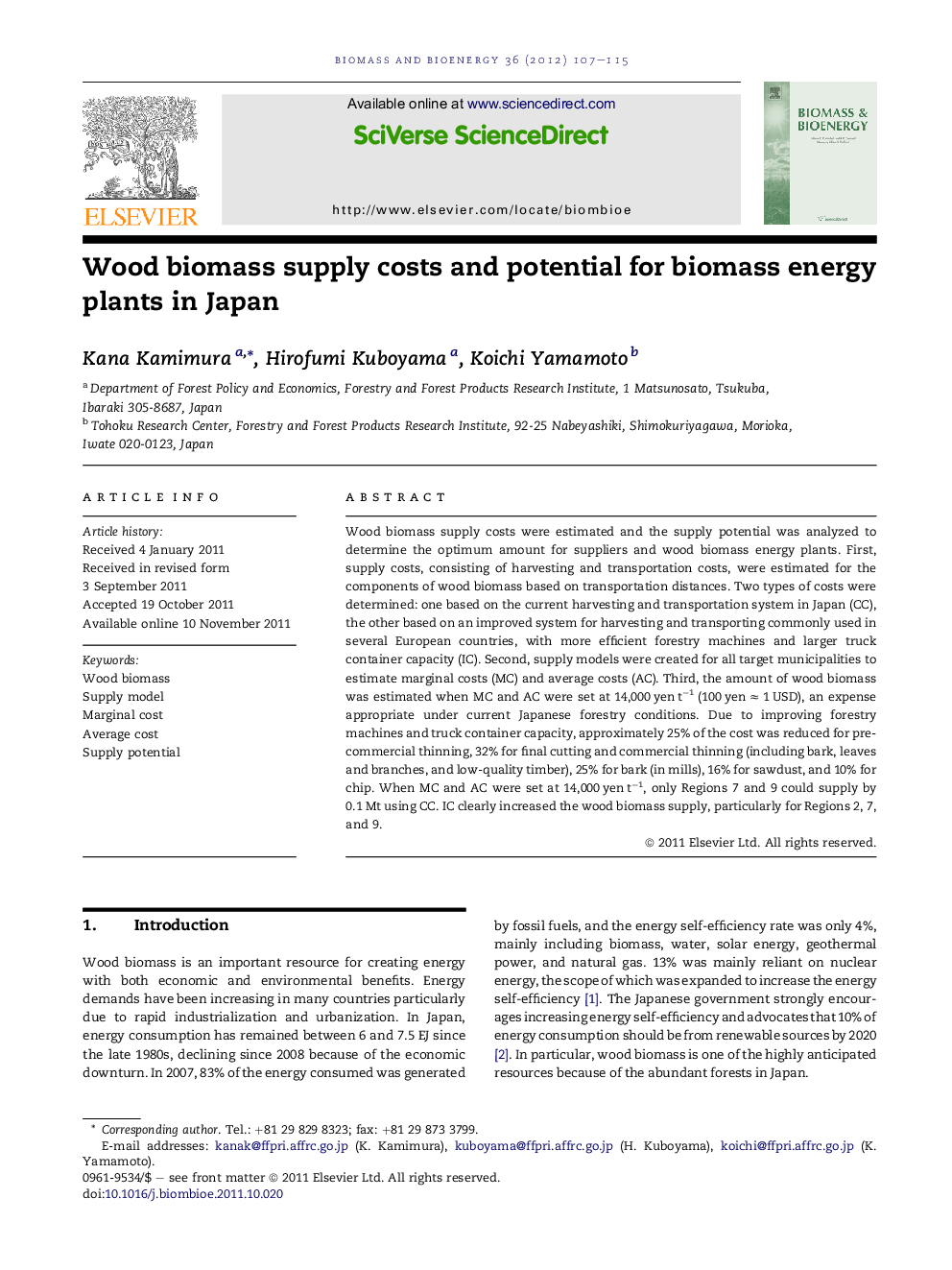| Article ID | Journal | Published Year | Pages | File Type |
|---|---|---|---|---|
| 677547 | Biomass and Bioenergy | 2012 | 9 Pages |
Wood biomass supply costs were estimated and the supply potential was analyzed to determine the optimum amount for suppliers and wood biomass energy plants. First, supply costs, consisting of harvesting and transportation costs, were estimated for the components of wood biomass based on transportation distances. Two types of costs were determined: one based on the current harvesting and transportation system in Japan (CC), the other based on an improved system for harvesting and transporting commonly used in several European countries, with more efficient forestry machines and larger truck container capacity (IC). Second, supply models were created for all target municipalities to estimate marginal costs (MC) and average costs (AC). Third, the amount of wood biomass was estimated when MC and AC were set at 14,000 yen t−1 (100 yen ≈ 1 USD), an expense appropriate under current Japanese forestry conditions. Due to improving forestry machines and truck container capacity, approximately 25% of the cost was reduced for pre-commercial thinning, 32% for final cutting and commercial thinning (including bark, leaves and branches, and low-quality timber), 25% for bark (in mills), 16% for sawdust, and 10% for chip. When MC and AC were set at 14,000 yen t−1, only Regions 7 and 9 could supply by 0.1 Mt using CC. IC clearly increased the wood biomass supply, particularly for Regions 2, 7, and 9.
► 10–32% of the wood biomass supply cost was reduced due to improved supply system. ► Regions having large sawmills could provide certain amount of biomass with low cost. ► At 14,000 yen t−1 of MC and AC, Regions 7 and 9 could supply by 0.1 Mt using CC. ► IC increased the wood biomass supply potential, in particular Regions 2, 7, and 9.
